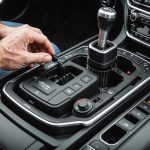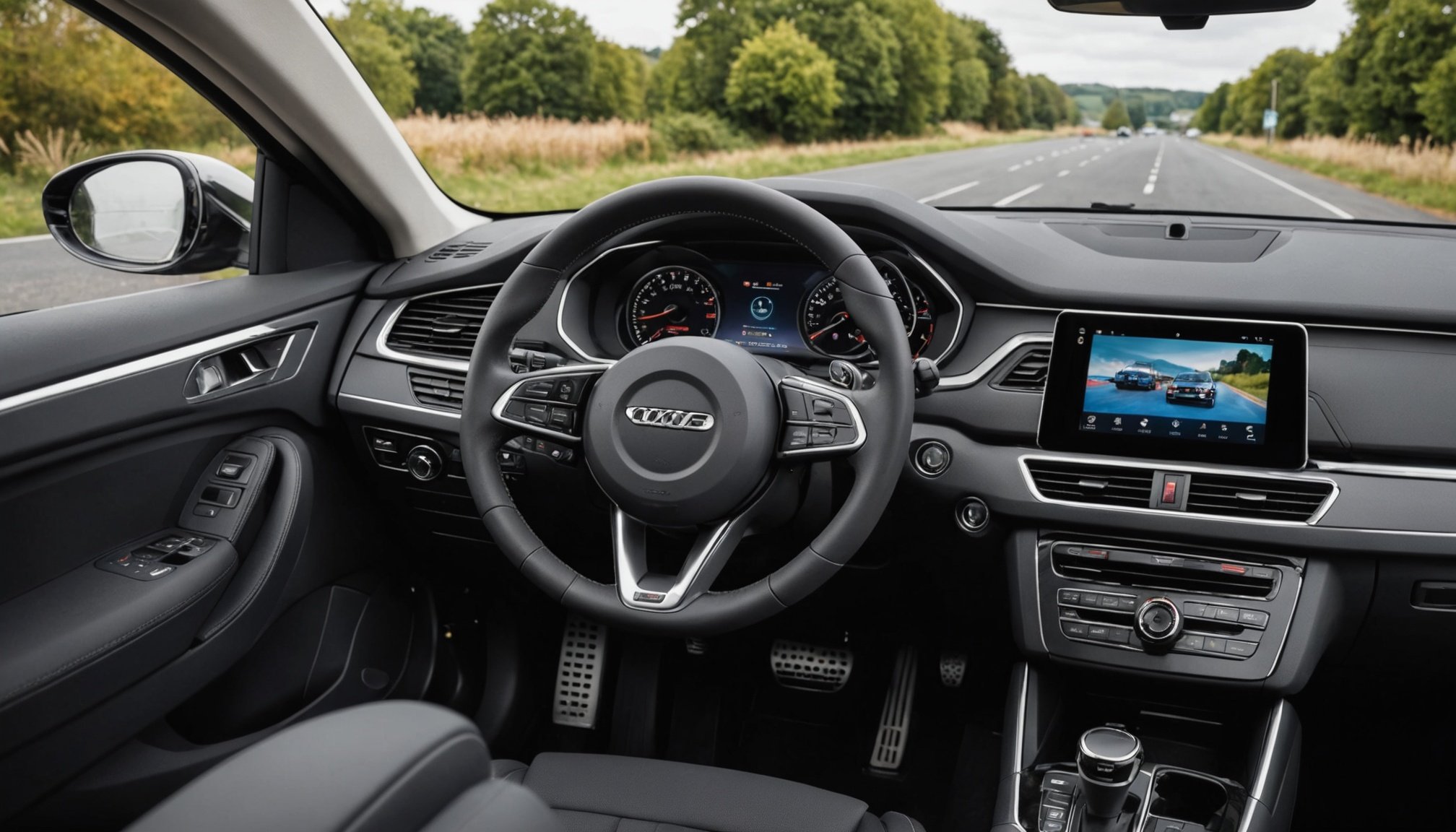Overview of Infotainment Technology
Modern infotainment systems are a pivotal component in enhancing the driving experience, offering a seamless blend of entertainment and information. These systems integrate various features such as navigation, audio/visual media, and connectivity solutions. With continual technological advancements, upgrading to contemporary technology in vehicles brings numerous technology benefits. Key advantages include real-time traffic updates, voice command functionalities, and seamless smartphone integration, which collectively enhance convenience and safety.
Trends in Infotainment Technology
In recent years, there has been a growing demand for features that provide enhanced connectivity and personalization. This trend indicates a shift towards systems that cater to user-specific needs and preferences. Typically, vehicle upgrades focus on incorporating cutting-edge interfaces, such as large touch displays with customisable widgets, and sophisticated interfaces that allow for easier interaction. Modern infotainment systems often support over-the-air updates, ensuring that technology remains up-to-date and relevant.
Additional reading : Explore japan’s iconic daikoku car meet for automotive fans
In summary, the evolution of infotainment systems is a testament to the automotive industry’s commitment to innovation. By focusing on the user’s drive, these systems continue to redefine how we interact with our vehicles.
Types of Infotainment Systems Available
In the diverse world of infotainment options, car owners have a plethora of market choices to enhance their driving experience. When considering a system comparison, it’s essential to evaluate both integrated and aftermarket systems. Integrated systems are factory-installed, seamlessly built into the vehicle, ensuring high compatibility with the car’s functions. Meanwhile, aftermarket options are purchased separately, offering flexibility and customisation for those looking to personalise their experience.
This might interest you : Ultimate drift dynamics: your essential guide to safely and legally enhancing your uk car for peak drift performance
The features and functionalities of these systems vary widely. Integrated systems often come equipped with built-in navigation, connectivity options like Bluetooth, and media streaming capabilities. Aftermarket systems, however, can offer more advanced features and adaptability, such as Apple CarPlay, Android Auto, and hands-free control.
When deciding between options, comparing the usability, interface design, and price is crucial. While integrated systems offer a polished look and potential cost-effectiveness, aftermarket choices can provide cutting-edge technological advancements and the freedom to choose specific features suited to your needs. Therefore, understanding your vehicle’s requirements and your preferences will ensure you select the ideal infotainment system for an enhanced driving experience.
Compatibility and Installation Considerations
When considering infotainment systems, ensuring vehicle compatibility is crucial. Different vehicles may require specific features or interfaces, so it’s important to assess compatibility with your model. This protects against purchasing an incompatible system that may not function optimally. To avoid common pitfalls and complications, consulting your vehicle’s manual or a specialist can be invaluable.
The installation process varies depending on whether you opt for integrated or aftermarket systems. Integrated systems generally come pre-installed and optimized by the manufacturer, making installation seamless. However, their upgrades may demand professional handling to maintain warranty and system integrity. Aftermarket systems, by contrast, offer flexibility but require careful installation to seamlessly integrate with existing vehicle functions. A knowledge of basic electrical systems may be beneficial here.
For a successful upgrade, expert advice suggests focusing on clear information display, intuitive interface, and ease of use. Investing in professional installation services can lead to better longevity and functionality of the system, especially for those less technically inclined. Ensuring all components are compatible and functioning as intended results in an enhanced driving experience that leverages the full benefits of modern infotainment technology.
Cost Analysis of Upgrading Infotainment Systems
Upgrading your vehicle’s infotainment system can range from affordable to premium, depending on your budget considerations. Diverse market offerings mean a comprehensive cost breakdown is crucial. Systems vary from basic models with standard features to advanced setups with cutting-edge functionalities.
-
Basic systems often cost less but may lack features like navigation or smartphone connectivity. Their simplicity makes them a value-for-money option for budget-conscious drivers.
-
Mid-range options provide a blend of essential features and advanced technology, such as Bluetooth and voice recognition. These systems offer good value for money, balancing affordability with key features.
-
Premium systems, though pricier, include extensive capabilities like integrated Wi-Fi and over-the-air updates. They appeal to tech enthusiasts who prioritise comprehensive functionality.
When planning your upgrade, it’s vital to consider not only the purchase price but also potential installation costs, which can add significantly to your budget. Opting for professional installation ensures functionality and durability, possibly preventing future expenses. Research and financial tips, such as comparing across brands and timing purchases with sales events, can help achieve a satisfactory and economical upgrade to your vehicle’s infotainment system.
Enhancing User Experience with Infotainment Systems
Improving the user experience with infotainment systems begins with understanding how these systems can be personalised for individual needs. Consider customising the interface to display information most relevant to you, whether it’s navigation, music, or connectivity options. Personalisation allows for a seamless interaction, maximising the potential of your system.
To optimise functionality, keep your infotainment system updated to ensure access to the latest features and improvements. This includes enabling over-the-air updates where possible, which enhance system performance. Regular updates can significantly boost system reliability and user satisfaction.
Avoid common user pitfalls by familiarising yourself with your system’s settings and options. One frequent issue is difficulty connecting smartphones or devices, which can often be resolved by checking compatibility and ensuring software updates are current.
For an elevated user experience, utilise the voice command features many systems offer. These voice prompts not only make for safer driving but also offer convenience in controlling various functions without taking your hands off the wheel. By focusing on personalisation and familiarisation, you can unlock the full range of benefits these systems provide.
Regulatory Considerations in the UK
Navigating the UK regulations surrounding vehicle modifications, especially with infotainment systems, is crucial for any car enthusiast or owner. Adhering to legal requirements ensures safety and compliance, avoiding significant fines or penalties. The Vehicle and Operator Services Agency (VOSA) mandates that any modifications must not compromise vehicle safety, affect roadworthiness, or interfere with in-car technology.
When installing aftermarket infotainment systems, there are legal implications to consider. These systems must not obstruct driver visibility or functionality. Additionally, any modifications should not affect sensor operations, which are essential for integrated safety features. It’s advisable to ensure that all installations align with the UK-specific standards set by the Driver and Vehicle Standards Agency (DVSA).
Resources like the Government’s official automotive guidelines are invaluable for ensuring compliance. Consulting with a professional or automotive expert familiar with UK regulations can provide clarity and assistance, mitigating the risk of non-compliance. Prioritising regulatory adherence not only safeguards your vehicle but also enhances the longevity and functionality of your infotainment system.
DIY Installation Tips for Infotainment Upgrades
Taking charge of your infotainment upgrade can be rewarding with the right approach and tools. To ensure a smooth DIY installation, start with practical tips and a step-by-step guide tailored for beginners.
Step-by-Step Guide
-
Preparation: Before installation, gather necessary tools and materials such as screwdrivers, wire strippers, and mounting brackets. Check your vehicle’s compatibility with the new system.
-
Disconnect Battery: To avoid any electrical issues, ensure your vehicle’s battery is disconnected.
-
Remove Old System: Gently dismantle the existing system using appropriate tools. This might require removing panels and screws, so proceed with care to avoid damage.
-
Wire Connections: Connect the new system’s wiring to the vehicle’s wiring harness. Ensure the wires are paired correctly to match functions like power and audio.
-
Mount the New System: Securely install the infotainment system into the dashboard using the mounting brackets.
-
Testing: Reconnect the battery and test the system to ensure all features function properly.
Troubleshooting Common Issues
- No Power: Check all connections and the fuse.
- Sound Issues: Verify speaker connections.
- Display Problems: Reassess screen settings and wiring.











